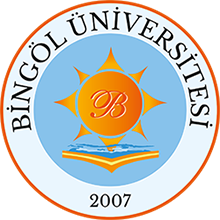ANALYSES OF TURBIDITY AND ACOUSTIC BACKSCATTER SIGNAL WITH ARTIFICIAL NEURAL NETWORK FOR ESTIMATION OF SUSPENDED SEDIMENT CONCENTRATION
Abstract
The commonly used sampling method is restrictive for the spatial and
temporal measurement of suspended sediment and requires intensive labor.
These limitations and technological advances have led to methods based
on sound or light scattering in water. In this study, the turbidity and
acoustic backscattering signal (ABS) values were used with the aim of
improving these methods with different artificial neural network (ANN)
models; Multilayer Perceptron (MLP), Radial Basis Neural networks (RBNN)
and General Regression Neural Network (GRNN). Measurements were taken in
a vertical sediment tower for two different sediment sizes (< 50 mu m
and 50-100 mu m) and concentrations (0.0-6.0 g L-1). In the results of
the regression analyses, turbidity values had strong relationships with
sediment concentration for both sediment size groups (R-2 = 0.937 and
0.967). Although the ABS values had a reasonable R-2 value (0.873) for
the 50-100 mu m group, the < 50 mu m group did not produce a significant
R-2 value with regression analyses. The remarkable differences were not
observed among MLP, RBNN and GRNN model for this sediment size group,
and the reasonable R-2 and RMSE results were not produced with any ANN
model that had a single ABS input for the < 50 mu m sediment group. On
the other hand, for the other sediment group (50-100 mu m), ABS values
were used as a single input, and the highest R-2 (0.917) value was
obtained with MLP model and it was improved with the turbidity input (up
to R-2 = 0.999). The results show that the ANN model could be considered
as an alternative method because it was applied successfully to estimate
suspended sediment concentration using with turbidity and ABS under
different particle size conditions.
Collections

DSpace@BİNGÖL by Bingöl University Institutional Repository is licensed under a Creative Commons Attribution-NonCommercial-NoDerivs 4.0 Unported License..













